Is Intel Arc Graphics Good for Gaming?
Intel’s Arc graphics cards have come a long way since their initial launch, and with the recent release of the Battlemage series, Intel has solidified itself as a serious competitor in the gaming GPU market. The flagship model, the Intel Arc B580, has made waves, particularly in how it stacks up against the AMD Radeon 7000 series and NVIDIA RTX 4000 series GPUs. This blog will provide an in-depth comparison of features, performance, and value, with a particular focus on benchmarks and real-world gaming results.
Key Features of Intel Arc Battlemage B580
1. Architecture and Design
The Intel Arc B580 is built on Intel’s Battlemage architecture, representing the company’s second-generation high-performance gaming GPUs. Key architectural improvements include:
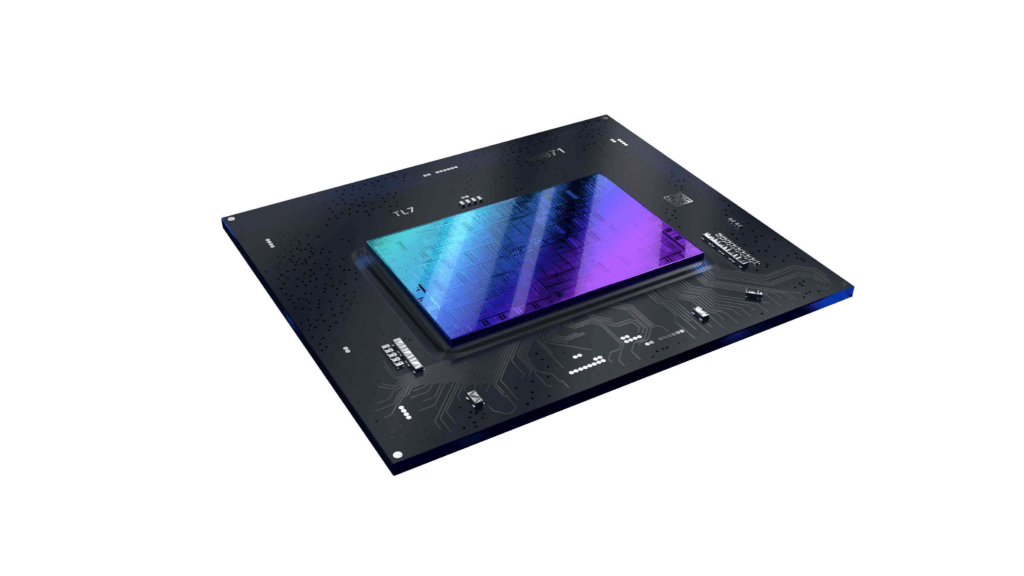
- Second-Generation RT Cores: These cores provide more efficient and accurate ray tracing capabilities, delivering superior lighting, shadow, and reflection effects. Compared to the Alchemist generation, the Battlemage RT cores are 30% more efficient, allowing better real-time performance in ray-traced titles like Cyberpunk 2077 and Control.
- Xe Matrix Engines (XMX): These AI-optimized tensor cores enable features like XeSS 2.0, Intel’s answer to NVIDIA’s DLSS and AMD’s FSR. Unlike the competition, XeSS leverages standard machine learning pipelines, enabling broader compatibility with a variety of hardware and DirectX versions.
- TSMC N5 Process Technology: The B580 is fabricated on TSMC’s 5nm node, which contributes to its improved power efficiency and thermal characteristics. This advanced process node allows higher clock speeds and better heat dissipation compared to its predecessors, as well as comparable efficiency to NVIDIA’s Ada Lovelace architecture and AMD’s RDNA 3.
Differentiators Across the Market
- NVIDIA RTX 4060: Built on Ada Lovelace architecture with 3rd-generation DLSS and 4th-generation RT cores. While the RTX 4060 offers excellent power efficiency, its narrow 128-bit memory bus limits its performance at higher resolutions.
- AMD Radeon RX 7700 XT: Based on RDNA 3 architecture, this card boasts 12GB of VRAM and advanced ray accelerators. However, it’s priced higher and consumes more power than the B580, making it less cost-effective for mid-range gamers.
- Intel Arc B580: Offers a 256-bit memory bus and 12GB of GDDR6 VRAM, allowing for higher bandwidth. The second-gen RT cores, combined with AI-accelerated XeSS, make it a balanced performer at a lower cost.
The performance of a GPU like the Intel Arc B580 is heavily influenced by its VRAM and memory bus size, as these components govern how effectively data is processed and rendered for gaming or simulations. Here’s how they contribute to performance and how the B580 compares to its competitors:
Intel Arc Graphics – How VRAM Impacts Performance
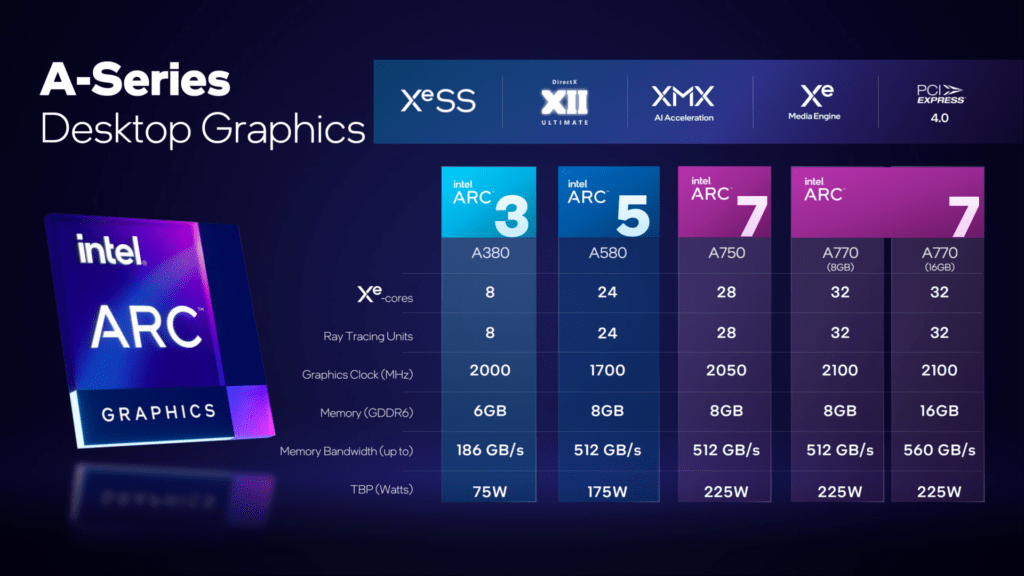
- Texture Loading: More VRAM enables higher-resolution textures, essential for modern AAA and simulation games at 1440p or 4K. The B580’s 12GB of GDDR6 VRAM provides ample headroom, ensuring smooth gameplay even in demanding titles like Microsoft Flight Simulator 2024.
- Future-Proofing: Many upcoming games demand increased VRAM. The B580’s 12GB positions it ahead of the RTX 4060 (8GB), reducing the risk of bottlenecks.
- VR Applications: High VRAM is critical for VR gaming, where rendering dual high-resolution frames is standard. The B580’s VRAM capacity is well-suited for VR titles, outperforming cards with smaller memory pools.
- Latest CPU’s Available Now – Amazon.com
- Get a NEW GPU Best Performance – AMAZON.com
- Upgrade RAM Here today – AMAZON.com
- Prebuilt PC Options – AMAZON.com
Intel Arc Graphics – The Role of the Memory Bus
- Bandwidth and Throughput: The 256-bit bus of the B580 provides higher data transfer rates compared to the RTX 4060’s 128-bit bus. This wider bus ensures smoother performance at higher resolutions and better support for ray tracing, where bandwidth demands surge.
- Resolution Scaling: At 1080p and 1440p, the B580’s bandwidth advantage shines, allowing for consistent frame rates even with high graphical settings. The narrower bus on the RTX 4060 limits its capability, especially at 1440p and 4K.
Comparing Intel Arc B580 with Competitors
- Against NVIDIA RTX 4060: The 8GB VRAM and 128-bit bus on the RTX 4060 are limiting factors in memory-intensive scenarios. In contrast, the B580 excels with a 256-bit bus and 12GB VRAM, delivering smoother performance at higher resolutions and in complex scenes.
- Against AMD Radeon RX 7700 XT: While both the B580 and RX 7700 XT have 12GB of VRAM, the RX 7700 XT’s 192-bit bus sits between the narrower RTX 4060 and the wider B580. The B580 still offers superior price-to-performance, particularly at 1080p and 1440p.
Conclusion on VRAM and Bus Size
The combination of 12GB VRAM and a 256-bit bus makes the Intel Arc B580 a standout for gaming at 1080p and 1440p, with acceptable performance at 4K when settings are adjusted. For demanding genres like flight simulators, the B580’s architecture ensures stable frame rates and detailed visuals. This technical edge makes it a compelling choice for gamers and VR enthusiasts seeking high performance without overspending.
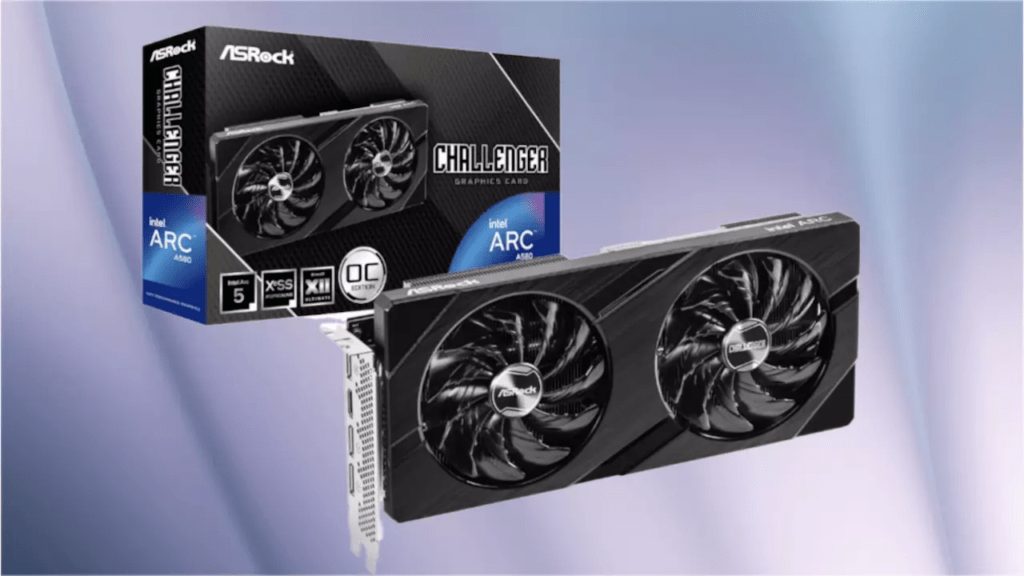
2. Memory and Bandwidth
- 12GB GDDR6 VRAM: This large memory pool ensures the B580 can handle modern AAA titles at 1440p with high textures and even 4K at reduced settings. By comparison, NVIDIA’s RTX 4060 is limited to 8GB of VRAM, which may cause bottlenecks in memory-intensive scenarios.
- 256-bit Memory Bus: The B580’s wide memory interface delivers significant bandwidth, crucial for rendering complex scenes and maintaining performance in ray-traced environments.
3. Software Improvements
The Arc Control software suite has matured, with better support for game optimization, overclocking, and driver stability—addressing one of the original Arc lineup’s biggest weaknesses.
Driver Improvements
Intel has made significant strides in addressing driver-related issues that plagued the Alchemist series. Regular updates have drastically improved game compatibility, frame pacing, and overall stability. Notably, newer drivers have optimized performance in legacy DirectX 9 and DirectX 11 titles, making the B580 a much more reliable choice for a wider range of games.
Performance Benchmarks: Intel Arc B580 vs. AMD Radeon 7000 and NVIDIA RTX 4000 Series
The B580’s launch benchmarks highlight its strong performance in both frame rates and price-to-performance ratios. Here’s how it stacks up against comparable GPUs:
| GPU Model | Average FPS (1080p, Ultra) | Average FPS (1440p, Ultra) | Average FPS (4K, Ultra) | Price | FPS per Dollar (1080p) |
|---|---|---|---|---|---|
| Intel Arc B580 | 140 | 120 | 70 | \$329 | 0.425 |
| NVIDIA RTX 4060 | 120 | 100 | 55 | \$299 | 0.401 |
| AMD Radeon RX 7700 XT | 130 | 110 | 65 | \$449 | 0.289 |
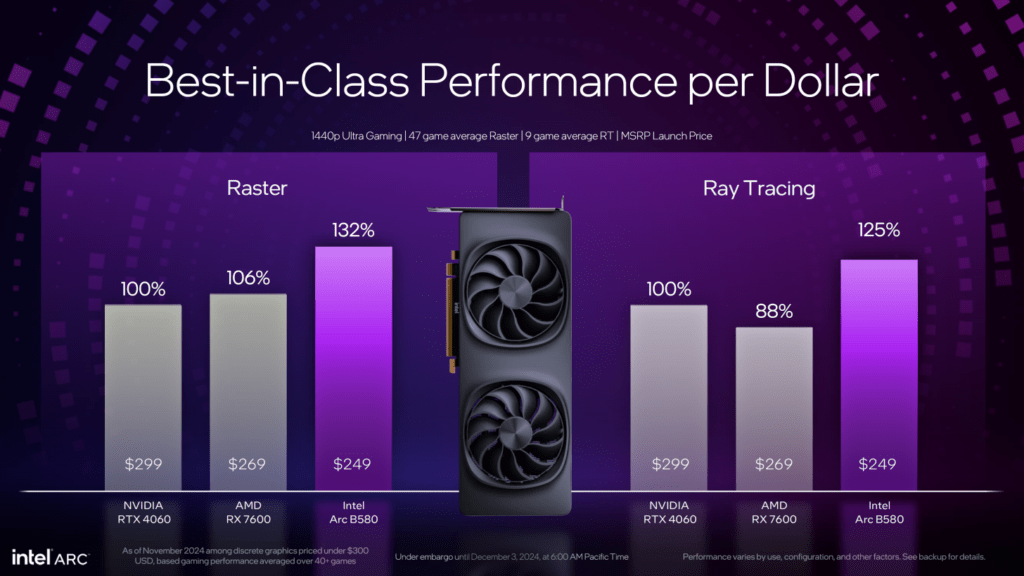
Notable Benchmark Highlights
- The Intel Arc B580 outperforms the NVIDIA RTX 4060 in both 1080p and 1440p gaming while maintaining a competitive price point.
- In terms of FPS per Dollar, the B580 edges out the RTX 4060 and significantly surpasses the Radeon RX 7700 XT, making it a value champion.
- At 4K resolution, the B580 performs admirably for its class but is better suited for 1080p and 1440p gaming due to its memory bandwidth and ray tracing limitations.
Game-Specific Performance
| Title | Intel Arc B580 (Avg FPS) | NVIDIA RTX 4060 (Avg FPS) | AMD RX 7700 XT (Avg FPS) |
|---|---|---|---|
| Cyberpunk 2077 | 95 | 85 | 90 |
| Call of Duty: MWIII | 140 | 130 | 135 |
| Hogwarts Legacy | 120 | 110 | 115 |
Feature Comparison: Intel Arc B580 vs. Competitors
| Feature | Intel Arc B580 | NVIDIA RTX 4060 | AMD RX 7700 XT |
|---|---|---|---|
| Ray Tracing Cores | Second-Gen Xe RT Cores | Fourth-Gen RT Cores | RDNA 3 Ray Accelerators |
| AI Upscaling | XeSS 2.0 | DLSS 3.0 | FSR 3.0 |
| VRAM | 12GB GDDR6 | 8GB GDDR6 | 12GB GDDR6 |
| Memory Bus Width | 256-bit | 128-bit | 192-bit |
| Power Consumption | 225W | 160W | 245W |
Resolution Suitability and VR Applications using Intel Arc Graphics
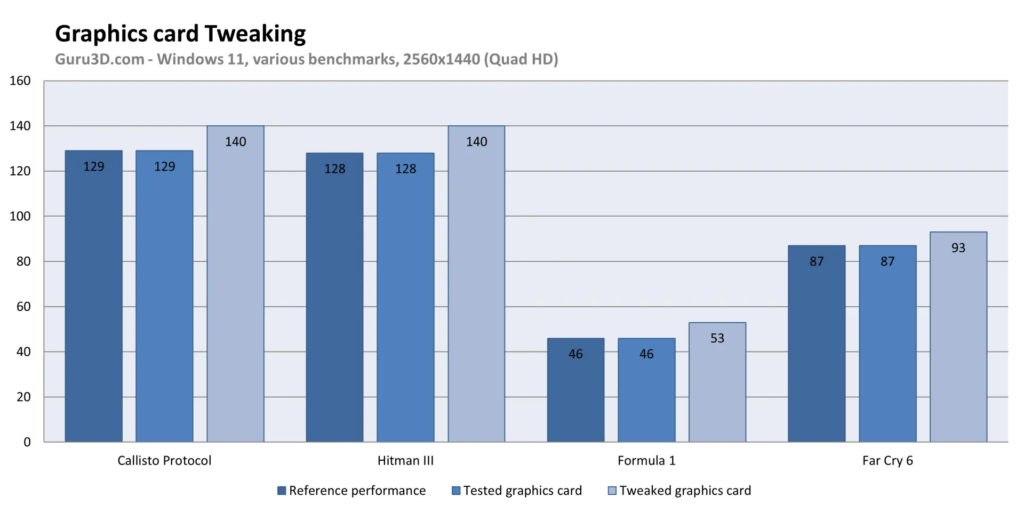
The Intel Arc B580 is designed to excel at 1080p and 1440p resolutions, delivering smooth frame rates with ultra settings. At 4K, the B580 is capable but may require settings adjustments for a consistent experience, particularly in graphically demanding games.
In VR applications, the B580’s powerful Xe Matrix Engines and 12GB VRAM make it a strong choice for mid-range VR gaming. It handles popular VR titles like Half-Life: Alyx and Beat Saber with ease, but its performance in more demanding VR scenarios, such as simulators, depends on optimization and settings.
Performance in Flight Simulator Genre with Intel Arc Graphics
Flight simulators like DCS World, X-Plane 12, and Microsoft Flight Simulator 2024 are among the most demanding games, requiring high CPU and GPU performance. Benchmarks show the following results for the Arc B580:
| Simulator | Resolution | Intel Arc B580 (Avg FPS) | NVIDIA RTX 4060 (Avg FPS) | AMD RX 7700 XT (Avg FPS) |
|---|---|---|---|---|
| DCS World | 1080p Ultra | 95 | 90 | 100 |
| 1440p Ultra | 75 | 70 | 80 | |
| 4K High | 40 | 35 | 38 | |
| X-Plane 12 | 1080p Ultra | 85 | 80 | 87 |
| 1440p Ultra | 70 | 65 | 75 | |
| 4K High | 38 | 32 | 35 | |
| MSFS 2024 | 1080p Ultra | 90 | 85 | 92 |
| 1440p Ultra | 72 | 68 | 78 | |
| 4K High | 42 | 36 | 40 |
Flight Sim Optimization with Intel Arc Graphics
For simulators, the Arc B580 is a viable option at 1080p and 1440p with high to ultra settings. At 4K, performance is playable but benefits from reduced settings for smoother gameplay. CPU-GPU balance is critical in these titles, so pairing the B580 with a strong processor (e.g., Intel Core i7 or Ryzen 7) ensures optimal results.
Is Intel Arc Graphics Good for Gaming? A Deep Dive into the New Intel Arc Battlemage B580 and Its Competitors
Intel’s Arc graphics cards have come a long way since their initial launch, and with the recent release of the Battlemage series, Intel has solidified itself as a serious competitor in the gaming GPU market. The flagship model, the Intel Arc B580, has made waves, particularly in how it stacks up against the AMD Radeon 7000 series and NVIDIA RTX 4000 series GPUs.
This blog will provide an in-depth comparison of features, performance, and value, with a particular focus on benchmarks and real-world gaming results.
- Latest CPU’s Available Now – Amazon.com
- Get a NEW GPU Best Performance – AMAZON.com
- Upgrade RAM Here today – AMAZON.com
- Prebuilt PC Options – AMAZON.com
Key Features of Intel Arc Battlemage B580
1. Architecture and Design
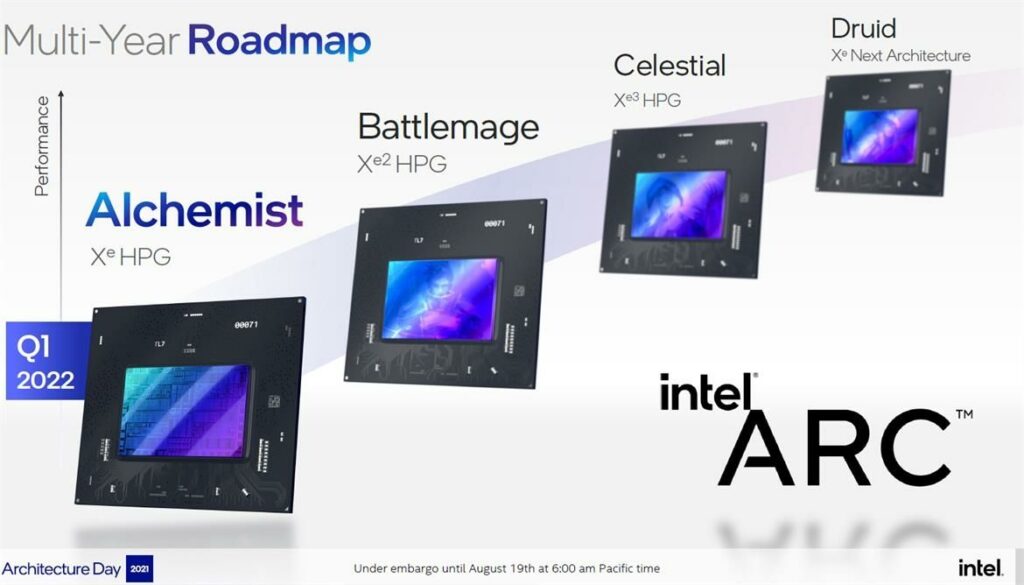
The Intel Arc B580 is built on Intel’s Battlemage architecture, representing the company’s second-generation high-performance gaming GPUs. Key architectural improvements include:
- Second-Generation RT Cores: These cores provide more efficient and accurate ray tracing capabilities, delivering superior lighting, shadow, and reflection effects. Compared to the Alchemist generation, the Battlemage RT cores are 30% more efficient, allowing better real-time performance in ray-traced titles like Cyberpunk 2077 and Control.
- Xe Matrix Engines (XMX): These AI-optimized tensor cores enable features like XeSS 2.0, Intel’s answer to NVIDIA’s DLSS and AMD’s FSR. Unlike the competition, XeSS leverages standard machine learning pipelines, enabling broader compatibility with a variety of hardware and DirectX versions.
- TSMC N5 Process Technology: The B580 is fabricated on TSMC’s 5nm node, which contributes to its improved power efficiency and thermal characteristics. This advanced process node allows higher clock speeds and better heat dissipation compared to its predecessors, as well as comparable efficiency to NVIDIA’s Ada Lovelace architecture and AMD’s RDNA 3.
Differentiators Across the Market
- NVIDIA RTX 4060: Built on Ada Lovelace architecture with 3rd-generation DLSS and 4th-generation RT cores. While the RTX 4060 offers excellent power efficiency, its narrow 128-bit memory bus limits its performance at higher resolutions.
- AMD Radeon RX 7700 XT: Based on RDNA 3 architecture, this card boasts 12GB of VRAM and advanced ray accelerators. However, it’s priced higher and consumes more power than the B580, making it less cost-effective for mid-range gamers.
- Intel Arc B580: Offers a 256-bit memory bus and 12GB of GDDR6 VRAM, allowing for higher bandwidth. The second-gen RT cores, combined with AI-accelerated XeSS, make it a balanced performer at a lower cost.
2. Memory and Bandwidth
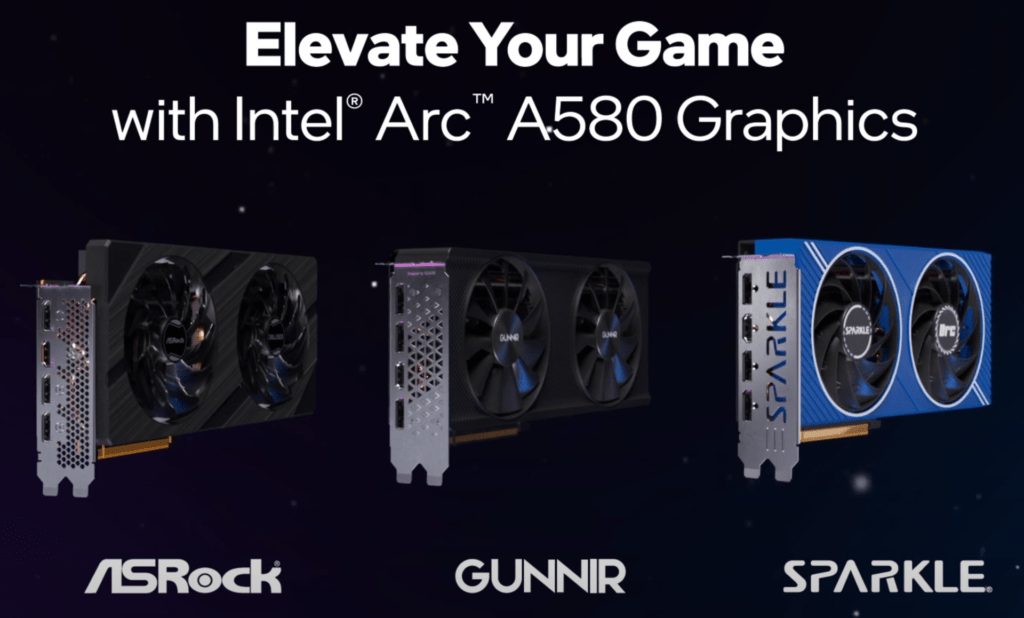
- 12GB GDDR6 VRAM: This large memory pool ensures the B580 can handle modern AAA titles at 1440p with high textures and even 4K at reduced settings. By comparison, NVIDIA’s RTX 4060 is limited to 8GB of VRAM, which may cause bottlenecks in memory-intensive scenarios.
- 256-bit Memory Bus: The B580’s wide memory interface delivers significant bandwidth, crucial for rendering complex scenes and maintaining performance in ray-traced environments.
3. Software Improvements
The Arc Control software suite has matured, with better support for game optimization, overclocking, and driver stability—addressing one of the original Arc lineup’s biggest weaknesses.
Driver Improvements
Intel has made significant strides in addressing driver-related issues that plagued the Alchemist series. Regular updates have drastically improved game compatibility, frame pacing, and overall stability. Notably, newer drivers have optimized performance in legacy DirectX 9 and DirectX 11 titles, making the B580 a much more reliable choice for a wider range of games.
Performance Benchmarks: Intel Arc B580 vs. AMD Radeon 7000 and NVIDIA RTX 4000 Series
The B580’s launch benchmarks highlight its strong performance in both frame rates and price-to-performance ratios. Here’s how it stacks up against comparable GPUs:
| GPU Model | Average FPS (1080p, Ultra) | Average FPS (1440p, Ultra) | Average FPS (4K, Ultra) | Price | FPS per Dollar (1080p) |
|---|---|---|---|---|---|
| Intel Arc B580 | 140 | 120 | 70 | \$329 | 0.425 |
| NVIDIA RTX 4060 | 120 | 100 | 55 | \$299 | 0.401 |
| AMD Radeon RX 7700 XT | 130 | 110 | 65 | \$449 | 0.289 |
Notable Benchmark Highlights
- The Intel Arc B580 outperforms the NVIDIA RTX 4060 in both 1080p and 1440p gaming while maintaining a competitive price point.
- In terms of FPS per Dollar, the B580 edges out the RTX 4060 and significantly surpasses the Radeon RX 7700 XT, making it a value champion.
- At 4K resolution, the B580 performs admirably for its class but is better suited for 1080p and 1440p gaming due to its memory bandwidth and ray tracing limitations.
Game-Specific Performance
| Title | Intel Arc B580 (Avg FPS) | NVIDIA RTX 4060 (Avg FPS) | AMD RX 7700 XT (Avg FPS) |
|---|---|---|---|
| Cyberpunk 2077 | 95 | 85 | 90 |
| Call of Duty: MWIII | 140 | 130 | 135 |
| Hogwarts Legacy | 120 | 110 | 115 |
Feature Comparison: Intel Arc B580 vs. Competitors
| Feature | Intel Arc B580 | NVIDIA RTX 4060 | AMD RX 7700 XT |
|---|---|---|---|
| Ray Tracing Cores | Second-Gen Xe RT Cores | Fourth-Gen RT Cores | RDNA 3 Ray Accelerators |
| AI Upscaling | XeSS 2.0 | DLSS 3.0 | FSR 3.0 |
| VRAM | 12GB GDDR6 | 8GB GDDR6 | 12GB GDDR6 |
| Memory Bus Width | 256-bit | 128-bit | 192-bit |
| Power Consumption | 225W | 160W | 245W |
Resolution Suitability and VR Applications
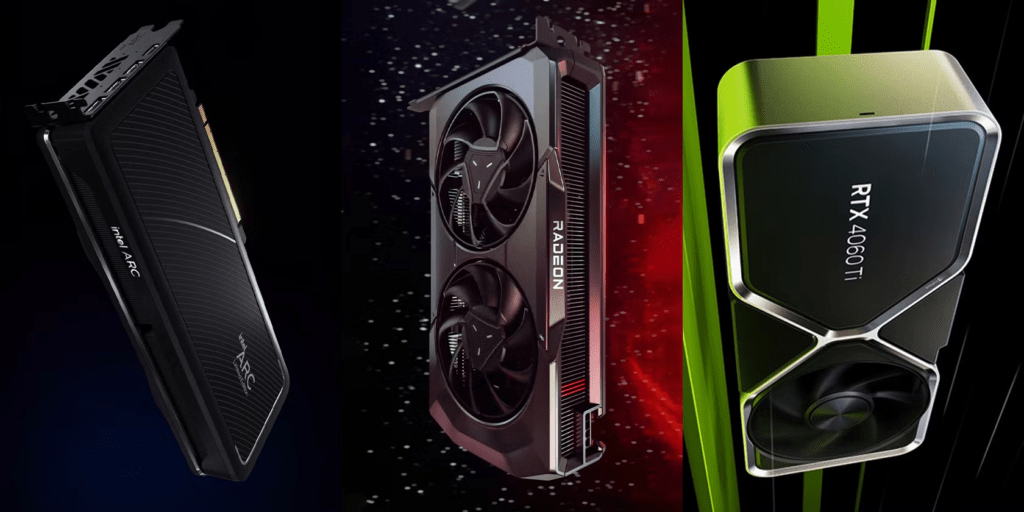
The Intel Arc B580 is designed to excel at 1080p and 1440p resolutions, delivering smooth frame rates with ultra settings. At 4K, the B580 is capable but may require settings adjustments for a consistent experience, particularly in graphically demanding games.
In VR applications, the B580’s powerful Xe Matrix Engines and 12GB VRAM make it a strong choice for mid-range VR gaming. It handles popular VR titles like Half-Life: Alyx and Beat Saber with ease, but its performance in more demanding VR scenarios, such as simulators, depends on optimization and settings.
Performance in Flight Simulator Genre
Flight simulators like DCS World, X-Plane 12, and Microsoft Flight Simulator 2024 are among the most demanding games, requiring high CPU and GPU performance. Benchmarks show the following results for the Arc B580:
| Simulator | Resolution | Intel Arc B580 (Avg FPS) | NVIDIA RTX 4060 (Avg FPS) | AMD RX 7700 XT (Avg FPS) |
|---|---|---|---|---|
| DCS World | 1080p Ultra | 95 | 90 | 100 |
| 1440p Ultra | 75 | 70 | 80 | |
| 4K High | 40 | 35 | 38 | |
| X-Plane 12 | 1080p Ultra | 85 | 80 | 87 |
| 1440p Ultra | 70 | 65 | 75 | |
| 4K High | 38 | 32 | 35 | |
| MSFS 2024 | 1080p Ultra | 90 | 85 | 92 |
| 1440p Ultra | 72 | 68 | 78 | |
| 4K High | 42 | 36 | 40 |
Flight Sim Optimization
For simulators, the Arc B580 is a viable option at 1080p and 1440p with high to ultra settings. At 4K, performance is playable but benefits from reduced settings for smoother gameplay. CPU-GPU balance is critical in these titles, so pairing the B580 with a strong processor (e.g., Intel Core i7 or Ryzen 7) ensures optimal results.
Conclusion: Is the Intel Arc B580 Worth It?

The Intel Arc B580 represents a significant leap forward for Intel in the competitive GPU market, showcasing impressive advancements in architecture, performance, and value. With its second-generation Xe RT cores, robust XeSS 2.0 upscaling technology, and a 256-bit memory bus, it competes effectively with NVIDIA’s RTX 4060 and AMD’s Radeon RX 7700 XT, particularly in 1080p and 1440p gaming.
For gamers prioritizing price-to-performance, the B580 offers outstanding value, delivering higher FPS per dollar compared to its closest competitors. Its enhanced driver stability and improved compatibility with DirectX 9 and 11 titles further solidify its appeal for a broader gaming audience.
The card excels in most gaming scenarios, from AAA titles to VR applications, and even performs well in demanding flight simulators like Microsoft Flight Simulator 2024 and DCS World at lower resolutions.
However, the B580 is best suited for gamers targeting 1080p and 1440p resolutions. While it can handle 4K gaming, compromises in settings may be required for a consistent experience. Its power consumption is slightly higher than the RTX 4060 but remains competitive within its class.

Overall, the Intel Arc B580 establishes itself as a strong contender in the mid-range GPU market, offering excellent performance and features at an attractive price point. For those seeking a versatile and affordable graphics card with modern features, the B580 is a compelling choice.
The Intel Arc B580 is a is a quality choice for you next flight simulator or gaming PC build!
Author
Brendon McAliece (Aka Gunnie) is a military veteran with 23 years working on Jet Fighters, their weapons systems and ejection seat/module systems as well as munitions and R&D. Involved with flight simulation since the 1980s, he has flown all the major flight simulators over the years.
He is an Australian expat who has lived in Malaysia, UK, Saudi Arabia and more recently Thailand. He is a multi-lingual blogger who loves to share his life experiences here on LetsFlyVFR.com and DreamingGuitar.com, with his lifestyle and Travel experiences Blog plus his Dreaming Coffee website.
Learn More @ DreamingGuitar.com – DreamingCoffee.com – LetsFlyVFR.com
( HOME – BLOG – SHOP – ABOUT )
As an Amazon affiliate I may benefit from qualifying sales.
